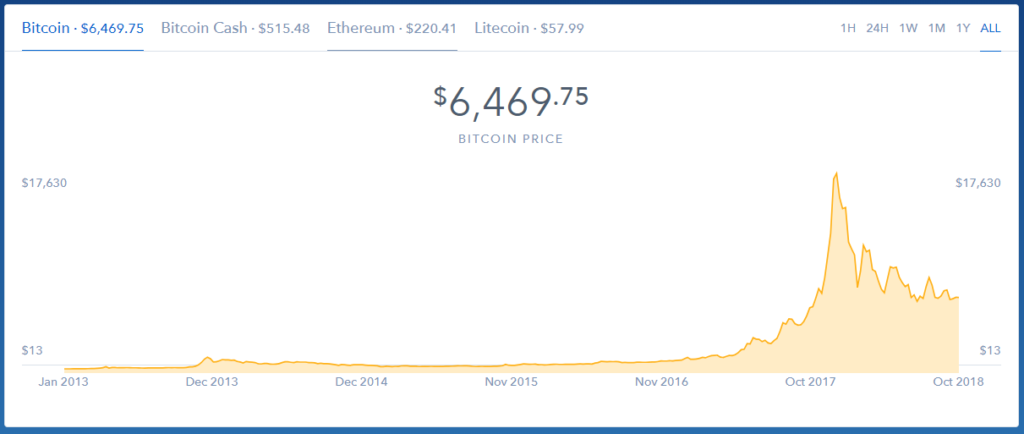Cryptocurrency has invoked a lot interest among investors and the general public within the last few years. The most popular questions people want to find an answer to, at any given point, are how much is a certain currency worth right now, and whether it would be beneficial to trade-in their crypto-coins or hold on to them until a time their prices peak, generating a profit.
Buying or trading cryptocurrencies can be risky. It requires an understanding of how things work, and how to analyse price trends to make predictions using online tools at hand, such as Coinbase charts.
What is Coinbase?
For buying and selling digital currencies, you need a platform to trade them on. Coinbase is a secure online platform for trading and storing digital currencies. It is essentially a digital currency exchange that brokers the conversion of most popular digital currencies among themselves and into fiat currency as well (USD, EUR etc.).
Coinbase is one of the biggest Cryptocurrency exchanges in the US. And just over a month ago, the company announced a new set of core principles for its institutional financial products, which are expected to take it further into the realm of digital currency.
Coinbase charts are a very reliable method of understanding the price history of popular digital currencies over the past few years. Digital currencies that you can track (and also trade) include Bitcoin, Bitcoin Cash, Ethereum, Litecoin and Ethereum Classic.

Understanding Coinbase charts
Predicting the price of digital currencies in order to plan for a secure investment is not easy. It is a risky game of probabilities, and no one can say for certain where the price will go next. Many traders have earned fortunes while others have lost nearly all their life savings. So, there’s a lot of uncertainty around cryptocurrencies.
Here are two major approaches to predicting the price of any currency, digital or otherwise.
-
Fundamental analysis – Analysis based on examining the underlying circumstances that effect the price or a currency or company share. For example, when a large public company fires its CEO, its share value is bound to go down, whereas the launch of new products brings it back up. It’s the same for fiat currency value; when a government becomes unstable, the stock exchange takes a hit resulting in a loss in currency value, whereas investment-friendly reforms on a government level tend to help improve currency value. Digital currency is no different, and is influenced by major events.
-
Technical analysis – This approach uses historical data to determine patterns and predict the value of any given economic entity. That is where Coinbase charts and other similar tools come in.
Let’s take a rudimentary look at Bitcoin’s price history over the past few years.
The closing price as of this writing is $6,469.75. We can see that before October 2017, Bitcoin price was pretty much a stable low. However, it peaked around mid-December 2017 to more than a staggering $17,000. But it started falling soon afterwards, with major dips around the second weeks of February, April, June and August 2018. The graph is now slowly leveling off.
Keeping this arbitrary pattern in mind, we can deduce that Bitcoin prices will probably be falling around mid-October as well. And if we see the trends for the last month, last week and last 24 hours, we indeed see a slow but steady decline in prices. Right now, might not be the best time to sell Bitcoin, as it might slightly increase in value after a couple weeks.
Unless of course there is a major drop in value due to any number of reasons.
Predicting trends is not an exact science, but Coinbase charts offer some basic level of visualisation that can help you determine patterns. If you are serious and want to pursue an investment in digital currency seriously, we recommend you study candlestick charts, which show not just the closing price but also the opening price and the highest and lowest points in a given period of time.
Good luck!



